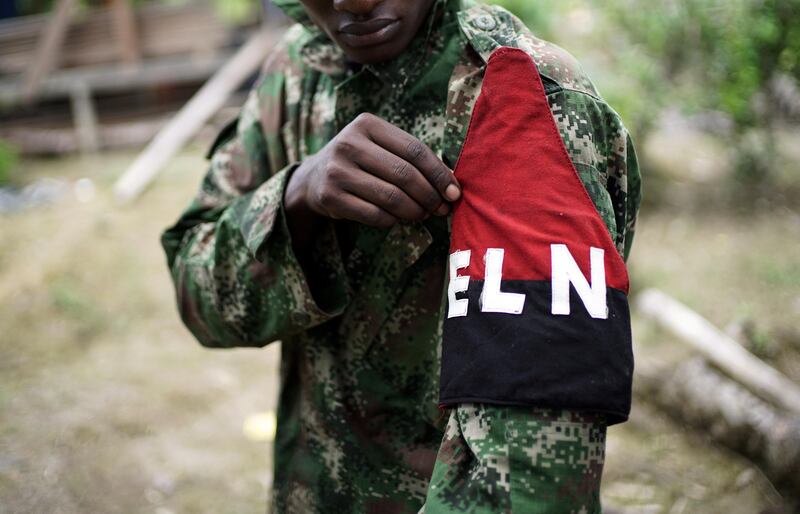After 50 years of armed struggle, the Colombian armed forces and the country's last guerrilla group, the ELN, began on Sunday a historic - if possibly temporary - truce.
The initial ceasefire between the National Liberation Army rebels and government forces, which began at midnight, is set to extend until January 9.
The truce is the most important achievement yet from peace talks carried out since February by negotiators for the rebels and the Colombian government of president Juan Manuel Santos in neighboring Ecuador, aimed at ending the longest armed conflict in the Americas.
"Starting at this moment, and as our Commander Nicolas Rodriguez said, the ELN will fully implement the bilateral ceasefire," the rebel group wrote on Twitter just after midnight.
Mr Rodriguez earlier ordered his troops to "cease all types of offensive activities to fully comply with the bilateral ceasefire".
The Colombian armed forces were also ordered to suspend operations against the guerrillas at the same time.
President Santos said he hoped the truce could serve as a "first step to achieving peace" with the rebel group.
The government last year reached a peace deal with the Revolutionary Armed Forces of Colombia (Farc) rebels, the oldest and most powerful guerrilla force in the region, that led to the group surrendering its weapons.
The runup to the truce, however, has been bloody, as ELN rebels attacked security forces and a major oil pipeline, leaving one soldier dead and causing oil spills in rivers near Venezuela.
On Saturday, just hours before the truce came into effect, government forces announced that they had killed an ELN commander in northeastern Colombia known as "Carro Loco" ("Mad Car") in a commando raid.
Separately, three police officers were killed in an ambush, while one of the presumed shooters was killed, in southwestern Colombia. The government initially blamed dissident Farc guerrillas, but ELN rebels are also active in the region.
The chief government negotiator, Juan Camilo Restrepo, on Saturday condemned what he called the "foolish onslaught" and said the ELN needed to "keep its commitments" if it wanted to erase its "bad image".
The rebels have killed or wounded 47 members of the security forces since January, according to defence minister Luis Carlos Villegas.
_________________
Read more:
[ Colombia declares Farc war over as last guns are taken away to be melted down ]
[ Colombian lawmakers pass Farc amnesty law ]
[ Colombia's president receives Nobel Peace Prize ]
_________________
The ceasefire agreed by the ELN, which has 1,500 fighters by official count, goes beyond the strictly military.
The rebels also agreed to halt attacks on oil facilities, to stop all hostage-taking, to suspend recruitment of minors and to stop planting explosives.
For its part, the government promised to improve prison conditions for 450 rebels and to strengthen protections for human rights leaders, 190 of whom have died in attacks since January 2016, according to the government ombudsman.
Monitors from the United Nations, the government, the rebels and the Catholic Church will verify compliance on the ground and seek to resolve any disagreements.
Jorge Restrepo, of the Conflict Analysis Resource Centre, said the truce could be more fragile than the earlier one with the Farc because the ELN has a looser command structure.
"The ceasefire is precariously structured and defined," he said.
A fourth round of peace talks is set for October 23 in the Ecuadorian capital of Quito.
The Farc and the ELN formed in 1964 to fight for land rights and protect rural communities. The conflict drew in leftist guerrillas, right-wing paramilitary groups and state forces and left 260,000 people dead, more than 60,000 missing and seven million displaced.






